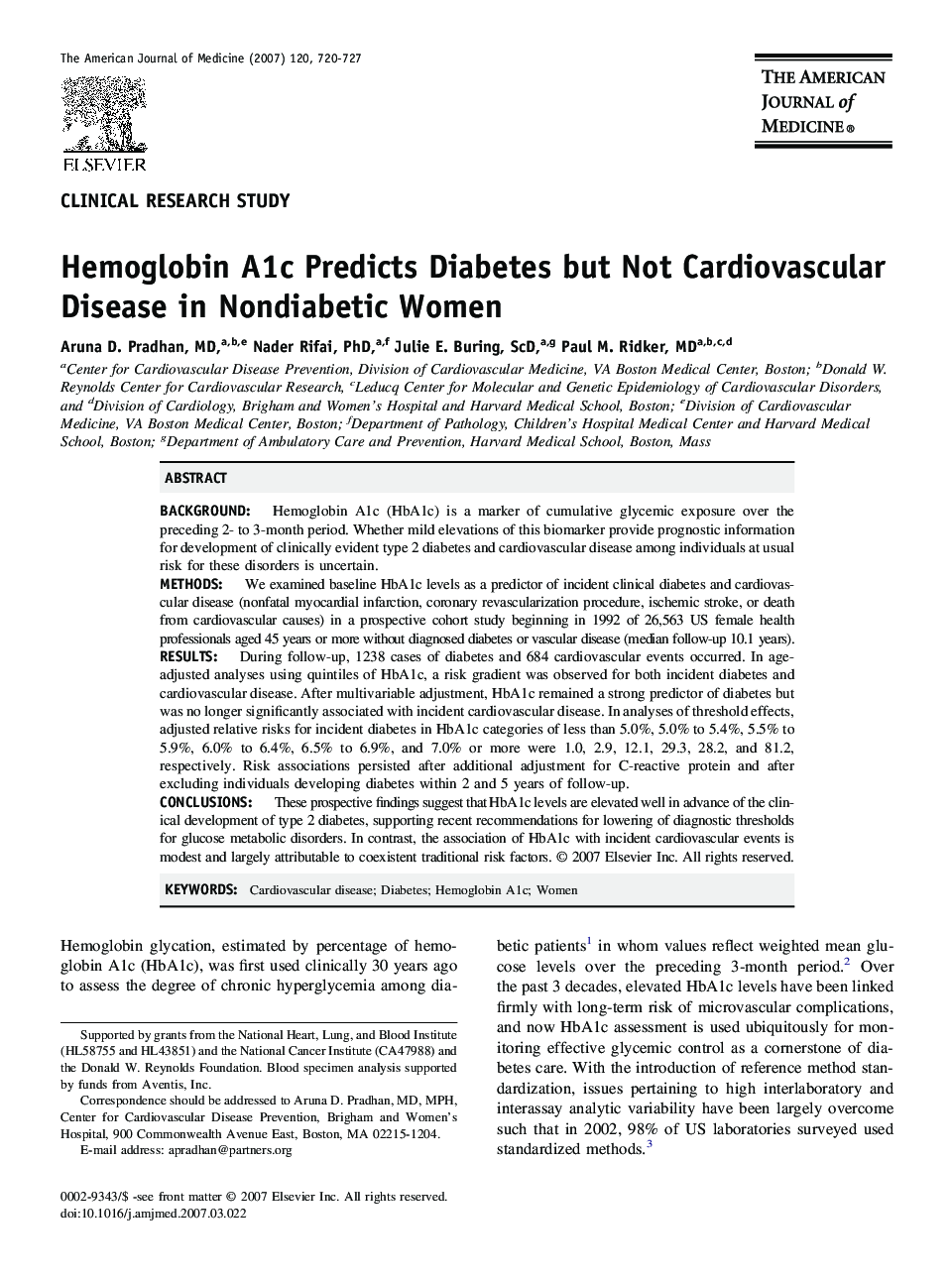| Article ID | Journal | Published Year | Pages | File Type |
|---|---|---|---|---|
| 2717601 | The American Journal of Medicine | 2007 | 8 Pages |
BackgroundHemoglobin A1c (HbA1c) is a marker of cumulative glycemic exposure over the preceding 2- to 3-month period. Whether mild elevations of this biomarker provide prognostic information for development of clinically evident type 2 diabetes and cardiovascular disease among individuals at usual risk for these disorders is uncertain.MethodsWe examined baseline HbA1c levels as a predictor of incident clinical diabetes and cardiovascular disease (nonfatal myocardial infarction, coronary revascularization procedure, ischemic stroke, or death from cardiovascular causes) in a prospective cohort study beginning in 1992 of 26,563 US female health professionals aged 45 years or more without diagnosed diabetes or vascular disease (median follow-up 10.1 years).ResultsDuring follow-up, 1238 cases of diabetes and 684 cardiovascular events occurred. In age-adjusted analyses using quintiles of HbA1c, a risk gradient was observed for both incident diabetes and cardiovascular disease. After multivariable adjustment, HbA1c remained a strong predictor of diabetes but was no longer significantly associated with incident cardiovascular disease. In analyses of threshold effects, adjusted relative risks for incident diabetes in HbA1c categories of less than 5.0%, 5.0% to 5.4%, 5.5% to 5.9%, 6.0% to 6.4%, 6.5% to 6.9%, and 7.0% or more were 1.0, 2.9, 12.1, 29.3, 28.2, and 81.2, respectively. Risk associations persisted after additional adjustment for C-reactive protein and after excluding individuals developing diabetes within 2 and 5 years of follow-up.ConclusionsThese prospective findings suggest that HbA1c levels are elevated well in advance of the clinical development of type 2 diabetes, supporting recent recommendations for lowering of diagnostic thresholds for glucose metabolic disorders. In contrast, the association of HbA1c with incident cardiovascular events is modest and largely attributable to coexistent traditional risk factors.
